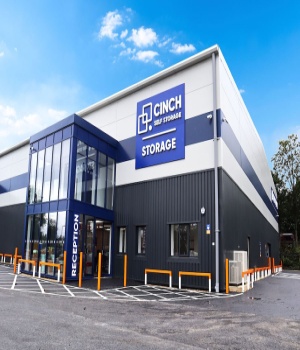If an expensive component of your self-storage facility breaks, like your HVAC unit, will you have the necessary funds for repair or replacement? Without dipping into your operating cash flow? You will if you have a plan for ongoing capital expenditures!
Find out how to create a budget and build up a reserve.
One of the most attractive features of owning a self-storage property is low ongoing capital expenditures (capex). Unlike with multi-family, office or even retail properties, there’s very little required to keep the operating cash flowing. But while storage capex are minimal, they do exist. You’ll occasionally need upgrades and fixes, and you never want to be caught off-guard. This is why you should maintain a budget to cover them. With proper reserves set aside, you’ll rarely—maybe never—be forced to tap into your operating cash flow.
A few years ago, one of my facility signs was destroyed by wind. Because it was visible from an expressway, it was imperative that we replace it as soon as possible, and it was going to be pricey. The original sign cost more than $60,000, and our insurance deductible was $10,000. That’s still a lot of money, but because of our modest reserve fund, we were able to pay it without missing even a penny in monthly distributions. Why? Because we had a capex plan!
Developing a budget means you’ll have the resources to pay for larger expenses when necessary.
Evaluate Your Property
The budget process starts with a thorough facility inspection. Consider the life expectancy and condition of all the major mechanicals and other components. With traditional self-storage investments, there’ll be ongoing depreciation of capital assets. Some things will need upgrades and replacement over the years, such as:
- HVAC unit
- Office/retail area
- Access gates
- Security systems
- Paving or gravel
- Unit doors
These are just some of the basics. Your facility might have other items that could be on this list, such as roofing, lighting, bollards, gutters and metal trim/accents. It really depends on the size, age and condition of your site.
Once you have a better understanding of your property and all its parts, you can create an estimated capex budget and determine approximately when you’ll need the funds for each item. You can even spread it across several years.
For example, your unit doors might be in good condition now, but could need replacement in five years. How old is your roof, and when does the warranty expire? When do you need to repave your driveways and parking lots, and how much will it cost? How many HVAC units are there, and what’s the remaining life expectancy of each?
The goal is to look at the big picture and start planning for how to pay for these expenses. Ideally, you’d add money to a reserve fund every month. It can be a set amount or might fluctuate depending on what’s happening with your business. In any case, having a well-written plan will help you keep track and make sure your reserve fund grows.
Set Up a Reserve Fund
I love a good shortcut, and when it comes to capex budgeting, I’ve learned a good one from conduit lenders. We started using that loan option because it requires a capital reserve, and the lender manages it—similar to an escrow account on a home loan. The reserve goal is usually a set amount per square foot per year.
We began to see that depending on facility condition, our reserve fund usually comes out to 12 to 15 cents per square foot. The older the facility and the more deferred maintenance it has, the closer it is to 15. Newer, better-kept sites tend to require less.
As an interesting side note, our reserve budget is almost exactly the same as our yearly repair and maintenance budget. We set up an account in which we put the reserve fund as well as one-twelfth of our property taxes each month. We set this aside before any partner distributions. Once we have a year or so of reserves, we virtually never have to dip into operating cash flow for capex. It also helps keep our insurance costs down. We can go for higher deductibles because we know we have reserve funds.
Dig In and Do It
One of the best things about self-storage is the predictability of cash flow.
However, it starts with your reserve budget. Do this, and it’ll be rare indeed if you ever have to dip into operating cash flow for capex. It isn’t hard to do. Just pick a goal and set funds aside each month, or however often you decide.
By doing this, you’ll increase the probability of hitting your projected cash flow and maximizing the ongoing value of your facility. The process isn’t complicated. It just requires a little discipline. If you’ve read this far, you likely already have that!






